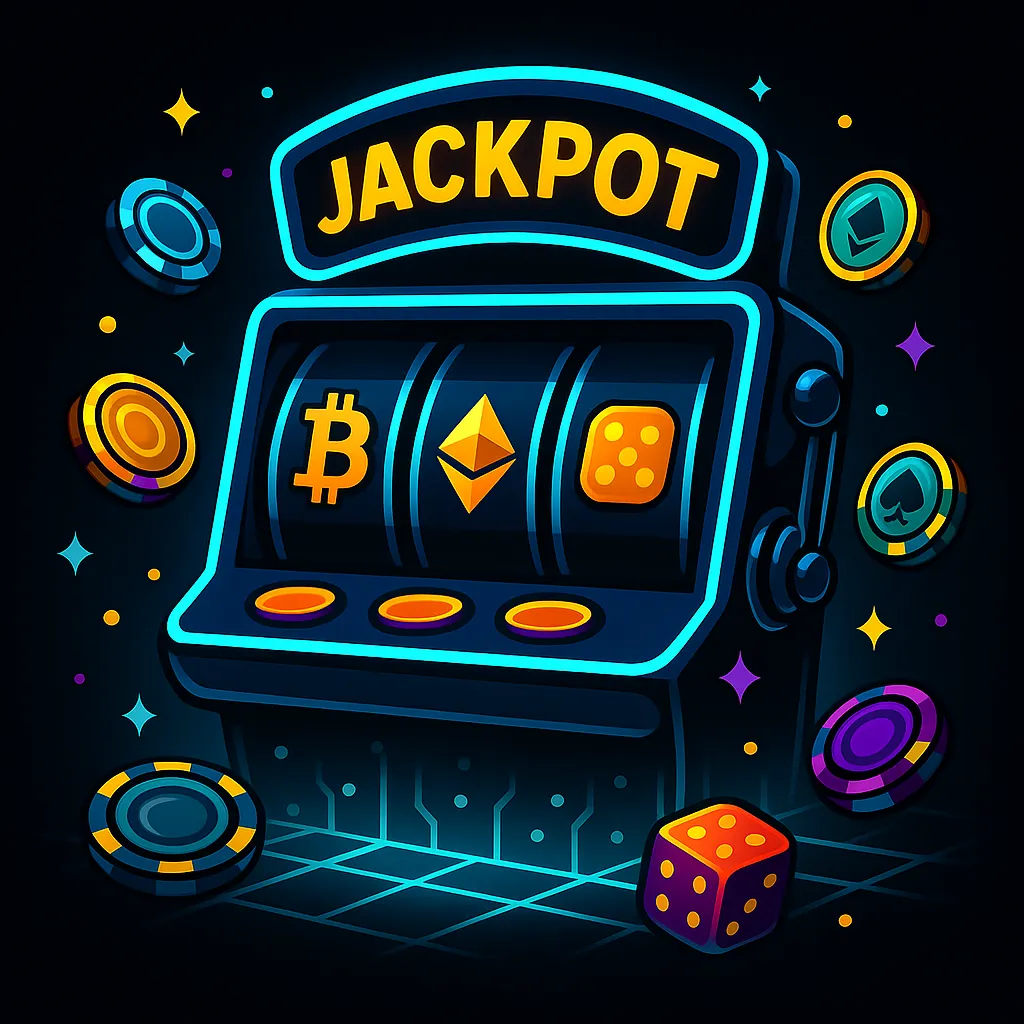When most people hear “crypto casino,” they picture sites like Stake or Rollbit where you deposit BTC or ETH, play some slots, and withdraw your winnings in crypto. That’s Web3 — but not fully on-chain.
The real endgame of blockchain gambling is on-chain casinos: platforms where every single bet, win, and payout happens directly on the blockchain, powered by smart contracts. No middlemen, no “trust me bro” — just pure code.
Let’s break down what that means, how it works, and why degens are hyped about this next evolution of gambling.
Hybrid Casinos vs. On-Chain Casinos
Most current “crypto casinos” are hybrids:
- You deposit crypto (BTC, ETH, USDT, etc.).
- The casino runs games on centralized servers (like any Web2 casino).
- Payouts are settled in crypto.
It’s Web3-lite — you use crypto, but you still trust the house.
On-chain casinos, by contrast, run everything directly on the blockchain:
- Smart contracts are the dealer, handling bets and payouts.
- Random numbers are provided by decentralized oracles (like Chainlink VRF).
- Every spin, roll, or hand is logged forever on-chain for anyone to verify.
👉 Hybrid = crypto payments, centralized games.
👉 On-chain = crypto payments, decentralized games.
A Simple Analogy
Think of it like poker night.
- In a hybrid casino, you’re still playing at a friend’s house — you use crypto chips, but they’re dealing the cards and handling payouts.
- In an on-chain casino, the dealer is replaced by a robot with open-source rules. Everyone can see how the shuffle works, and payouts happen automatically.
Real-World Examples
- FunFair (Ethereum, 2017): One of the earliest on-chain gambling experiments. Games ran via smart contracts, but high gas fees killed adoption.
- Polymarket: 100% on-chain prediction markets where users bet on elections, sports, and world events. All outcomes are verified by decentralized oracles.
- Dope Chain / Parlay: New-wave platforms exploring fully on-chain prediction games and jackpot systems.
- Dice & coin-flip dApps: Many small dApps on Ethereum, Solana, and BNB Chain let you flip coins or roll dice directly on-chain, provably fair with smart contracts.
How On-Chain Gambling Works
- Connect Wallet: You sign in with MetaMask, Phantom, or another wallet. No account, no email, just Web3 login.
- Place Bet: You send crypto to the game’s smart contract.
- Randomness Generated: Oracles like Chainlink VRF provide tamper-proof random numbers.
- Outcome Decided: The smart contract executes the game rules transparently.
- Payout: If you win, funds are sent instantly back to your wallet — no withdrawal delays.
Every step is public, auditable, and forever stored on-chain.
Why It Matters
- Transparency: Every bet and payout is visible. No hidden manipulation.
- Security: No one (not even the casino) can tamper with results.
- Instant payouts: Smart contracts auto-send winnings.
- Borderless: Anyone with internet + a wallet can play.
According to DappRadar, fully on-chain gambling dApps already process millions of transactions monthly, even though the sector is still in early days.
Pros and Cons
Pros
- Trustless: You don’t need to trust a central operator.
- Verifiable: All games provably fair.
- Global: Works anywhere with internet.
- Instant: Payouts settled in seconds/minutes.
Cons
- UX friction: Gas fees and blockchain delays can hurt gameplay.
- Game variety: Harder to run flashy 3D slots fully on-chain.
- Scalability: L1 chains like Ethereum are too slow/expensive for high-volume gambling.
- Risk of bugs: If a smart contract has an exploit, funds can be drained.
The Tech Behind It
- Smart Contracts: Code on Ethereum, Solana, or L2s executes the game logic.
- Oracles: Services like Chainlink VRF provide verifiable randomness. Without this, results could be gamed.
- Layer 2 Scaling: Chains like Arbitrum, Optimism, and Base reduce fees, making on-chain betting feasible. Solana’s speed also makes it a strong contender.
The Future of On-Chain Casinos
We’re still early, but trends point to massive growth:
- L2 adoption: As fees drop, more complex games can move fully on-chain.
- Cross-chain liquidity: Players may bet on one chain and cash out on another seamlessly.
- Metaverse integration: Imagine walking into a VR casino where every slot and roulette table is run fully on-chain.
- Regulation clarity: Governments are warming up to crypto (Bitcoin ETFs, MiCA in EU). Clearer rules may push more projects to build fully decentralized gambling apps.
Industry experts project that on-chain gambling could grow from today’s niche into a multi-billion-dollar sector by 2030, especially as Web3 natives (degens who grew up with crypto wallets, NFTs, and DeFi) make up more of the gambling audience.
Final Word
On-chain casinos are the purest form of Web3 gambling. No middlemen, no trust issues, just math and code.
Are they perfect right now? No — high fees, clunky UX, and limited games still hold them back. But as blockchains get faster and smarter, the idea of provably fair, fully decentralized casinos will go from degen experiment to mainstream reality.
Web2 gave us global casinos online. Web3 gave us crypto-native hybrids. The next step? On-chain casinos where the dealer is code, the chips are tokens, and the house edge is provably fair.
Welcome to the casino you can verify, not just trust. Wagmi fam 🚀


